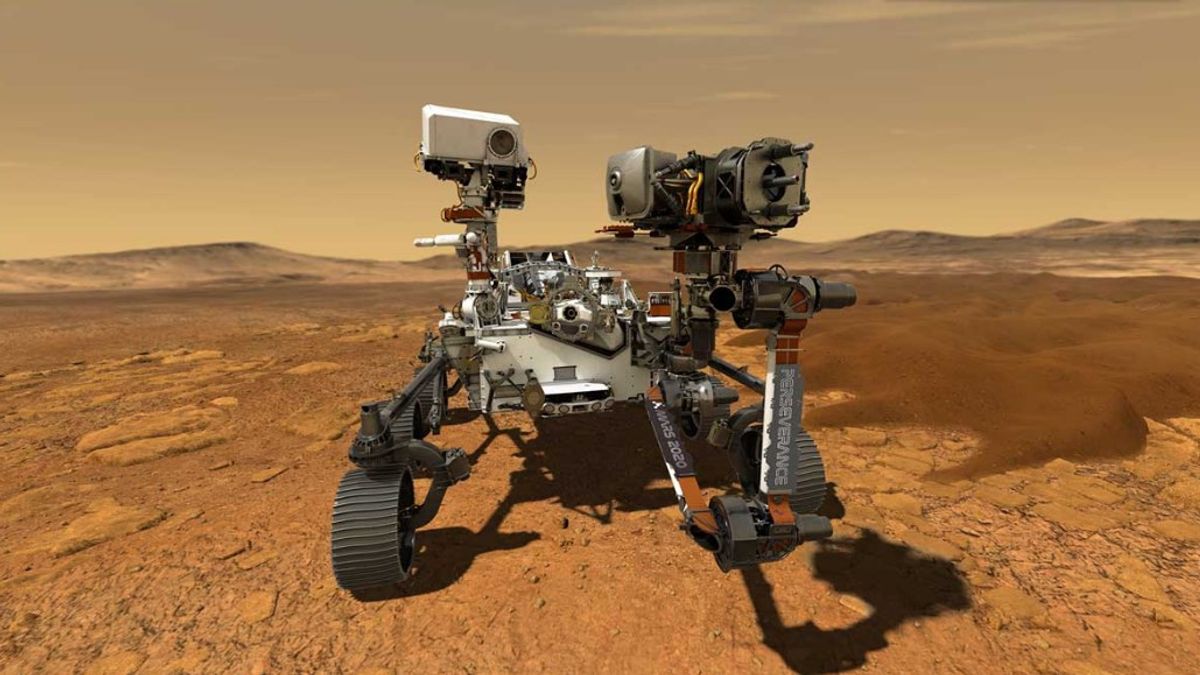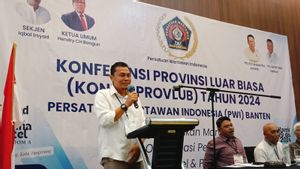JAKARTA - NASA's Perseverance Robot, which is now on Mars, has made another breakthrough by converting carbon dioxide into oxygen. Perseverance uses a device mounted on its body to suck carbon dioxide from the Martian atmosphere.
This first breakthrough made researchers even more optimistic about future space exploration. Oxygen is not only used to breathe outside Earth but can also be used to launch rockets that will bring humans home from Mars to Earth.
Launching Futurism on Thursday, April 22, the tool is called Mars Oxygen In Situ Resource Utilization Experiment (MOXIE). MOXIE is a demonstration of a technology that can be improved to produce enough propellant to allow spacecraft to take off from the surface of the Red Planet.
Another huge first: converting CO2 into oxygen on Mars. Working off the land with what's already here, my MOXIE instrument has shown it can be done!
Future explorers will need to generate oxygen for rocket fuel and for breathing on the Red Planet. https://t.co/9sjZT9KeOR
- NASA's Perseverance Mars Rover (@NASAPersevere) April 21, 2021
"This is an important first step towards converting carbon dioxide to oxygen on Mars", said Jim Reuter, administrator of NASA's Association of Space Technology Mission Directorate (STMD) in a statement.
"MOXIE has a lot more work to do, but the results of this demonstration of technology are very promising as we move towards our goal of someday seeing humans on Mars", added Jim.
He also explained that oxygen does not only function for human survival but can also be used for rocket propellants.
"Oxygen is not just for us to breathe", said Jim. "Rocket propellant (also) depends on oxygen. And future exploration will depend on propellant production on Mars to travel back (to Earth)".
SEE ALSO:
According to MOXIE researcher Michael Hecht said that to breathe on the surface of Mars, you only need about one metric tonne of oxygen for a crew of four for an entire year.
On the other hand, bringing oxygen from Earth and storing it for use on Mars is complicated and very expensive. Therefore scientists chose to extract oxygen from the planet's carbon dioxide.
To convert carbon dioxide on the planet Mars, MOXIE must first heat the gas to about 1,470 degrees Fahrenheit or about 798,889 Celsius. The action succeeded in producing about five grams of oxygen which is equivalent to oxygen to breathe for 10 minutes. For each hour, up to ten grams of oxygen can be produced.
Currently, Hecht will ask MOXIE to try several new operations, one of which is to extract oxygen at various temperatures.
"MOXIE is not only the first instrument to produce oxygen in another world", said Trudi Kortes, Director of Technology Demonstration NASA. He is also the first researcher to lay the groundwork for future missions using in-situ resources.
For information, the use of in-situ resource utilization (ISRU) is the practice of collecting, processing, storing, and using materials found or produced in astronomical objects (Moon, Mars, Asteroids, etc.) to replace these materials. material that is on Earth.
Previously, NASA had successfully flown Ingenuity helicopters on Mars controlled from Earth. This time, NASA made an extraordinary breakthrough to bring humans closer to Mars than ever before.
The English, Chinese, Japanese, Arabic, and French versions are automatically generated by the AI. So there may still be inaccuracies in translating, please always see Indonesian as our main language. (system supported by DigitalSiber.id)








